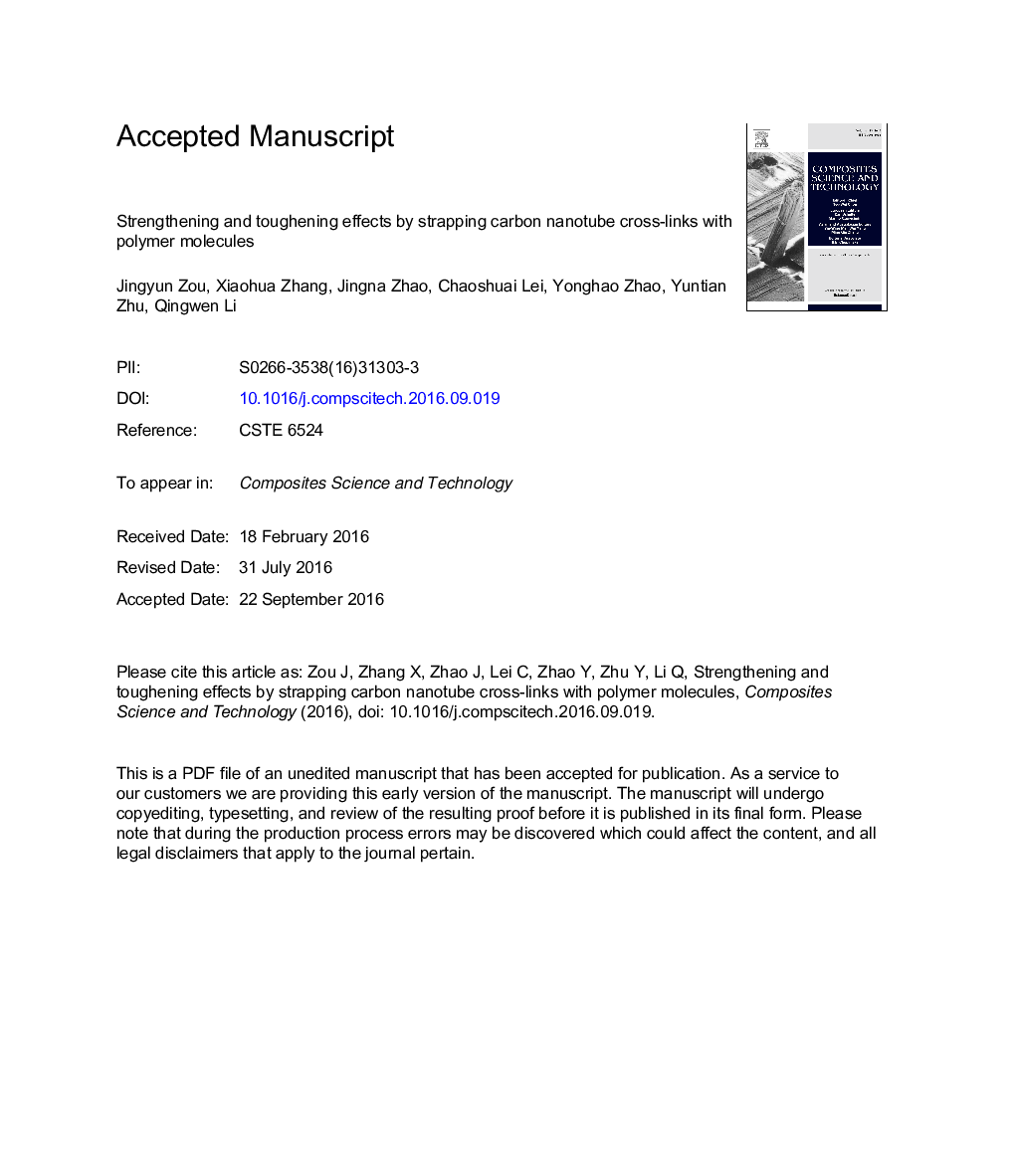| Article ID | Journal | Published Year | Pages | File Type |
|---|---|---|---|---|
| 5022442 | Composites Science and Technology | 2016 | 19 Pages |
Abstract
Cross-linked carbon nanotube (CNT) networks provide efficient load and charge transfer within their assemblies. Injection chemical vapor deposition (iCVD) has been widely used to obtain such structure with rich cross-links. However, in the iCVD process, a certain organic by-products, probably dioctyl phthalate (DOP) molecules, co-exist in the CNT network, which degrade the interfacial property between CNTs. The removal of the DOP-like molecules can remarkably strengthen the CNT cross-links, improving the assembly's modulus, but it also causes significant loss in toughness. Here we report that strapping up the strengthened cross-links with long-chain and inherently polar polymer polyvinylidene fluoride (PVDF) can result in a simultaneous strengthening and toughening of CNT assemblies, e.g. CNT fibers. This finding represents a new strategy to develop advanced CNT-based macroscopic assembly materials.
Related Topics
Physical Sciences and Engineering
Engineering
Engineering (General)
Authors
Jingyun Zou, Xiaohua Zhang, Jingna Zhao, Chaoshuai Lei, Yonghao Zhao, Yuntian Zhu, Qingwen Li,
